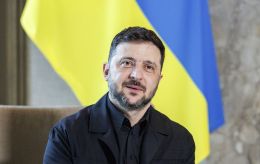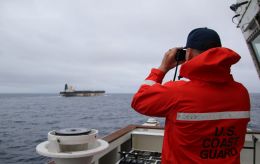Russia intends to launch Zaporizhzhia Nuclear Power Plant: Possible consequences
 Russians want to launch ZNPP in November. (Photo: Getty Images)
Russians want to launch ZNPP in November. (Photo: Getty Images)
Russia has decided to launch the Zaporizhzhia NPP in November this year. RBC-Ukraine analyzes whether Russia will succeed in realizing its plans and what it will need to do to do so.
Sources used: Foreign media, agency's sources, and comments of RBC-Ukraine experts.
Contents
- Why Russia needs to launch ZNPP
- Does plant launch need to be coordinated with IAEA
- ZNPP needs to be connected to Russian power grid to start up
- Russian provocations' goals
Russia is going to launch the Zaporizhzhia NPP by the end of this year. The WSJ reported this last week, citing its sources. The information is based on technical reports from IAEA experts who are at the plant.
Ukraine also has data on which to base a similar conclusion. This has not been officially confirmed, but RBC-Ukraine's sources in government circles claim to have received such information.
ZNPP was seized by the Russian army in the first days of the full-scale invasion of Ukraine. All 6 power units of the plant were shut down, but its management was carried out by Ukrainian specialists. But since January 2024, no employee who has not signed a contract with Rosatom has been allowed to work at the plant.
It is not yet known how much the Russians want to launch the station. According to the WSJ, they may be talking about one power unit, which they allegedly want to launch by the 40th anniversary of the plant's connection to the USSR power grid (the first unit of ZNPP was launched in November 1984 - ed.) The information about the launch plans was allegedly confirmed by Putin at a meeting with IAEA Director General Rafael Grossi in Sochi in March.
Why Russia needs to launch ZNPP
Russia does not need additional electricity to supply its consumers. Therefore, they do not need the plant's generation capacity, says Mykola Steinberg, former chief engineer of the Chornobyl Nuclear Power Plant. "I think there is no need for this. Perhaps this is a political move to show that they can do anything if they want to," he tells RBC-Ukraine.
Long-term operation of ZNPP after the Kakhovka reservoir was destroyed is practically impossible - there is not enough cooling water for turbine condensers, the expert notes. "In the absence of water, it is simply impossible to talk about the long-term operation of the plant," Steinberg says.
.jpg) ZNPP cooling pond (Photo: planet.com )
ZNPP cooling pond (Photo: planet.com )
However, for some time, for example, for a few hours, maybe days, with virtually no electricity generation, it is not a big problem to launch one of the plant's units. "This can be done to demonstrate the possibility of reaching capacity, to demonstrate that everything is fine at the NPP, nuclear safety is guaranteed," he emphasizes.
But long-term operation of the NPP to generate electricity will be impossible. After such operation, the reactor will generate residual heat again. And it will take a long time, possibly several weeks of reliable power supply, to cool it down, the expert notes.
Does plant launch need to be coordinated with IAEA
The launch of the plant will not require any additional approvals from the IAEA or other organizations. The decision to launch the plant, Steinberg said, can be made by Russia on its own.
"The IAEA has nothing to do with it. If Ukraine were to launch the station, it would have to provide the Agency's inspection with evidence of compliance with the requirements of the safeguards regime (non-proliferation of nuclear weapons - ed.). This is not necessary for Russia. Russia is a nuclear power and has nuclear weapons, these problems do not concern it," Steinberg says.
The only thing Russia needs to do is to issue a license to operate the plant. Back in 2022, Rosatom established the Zaporizhzhia NPP Operating Organization to manage the plant. It is this company that should have a license. "The state of the licenses of the Ukrainian Nuclear Regulatory Inspectorate (SNRIU) is in a kind of uncertain state. I believe that they cannot form the legal basis for the activities of the Russian operating organization," Steinberg said.
In the first half of April, representatives of Rostekhnadzor visited ZNPP and met with IAEA inspectors. Perhaps they are already starting to address the issue of licensing, the expert suggested. The full list of issues discussed during the Rostekhnadzor visit is not known. However, it was reported that the Russians were interested in the IAEA inspectors' assessments of the physical and nuclear safety of the plant.
_1.png) Russian troops at ZNPP (Photo: Getty Images)
Russian troops at ZNPP (Photo: Getty Images)
ZNPP needs to be connected to Russian power grid to start up
ZNPP is currently connected to the Ukrainian power grid. To launch the plant, the Russians will need to reconnect it to their power grid. This will take several days, Energoatom President Petro Kotin said in an interview with RBC-Ukraine. Such attempts were already made in 2022, but they failed.
As Olha Kosharna, head of the Anti-Crisis Nuclear Expert Center of Ukraine, notes in a comment to RBC-Ukraine, the Russian Federation is actively working to restore power lines from ZNPP to the occupied territories that were damaged earlier. This may indicate that the plan to launch the plant is gradually being implemented.
In addition, the recent transfer of ZNPP Unit 4 to the cold shutdown mode can also be considered preparation for the launch of the plant. Now, Kosharna notes, they will probably try to bring it to a safer state for operation. The power unit has been in the hot mode longer than the permissible norm - almost since August last year. The maximum period of stay in this state of the unit is 100 hours during the year.
Similar violations at power units 5 and 6 in 2022-2023 led to disruptions in the operation of steam generators. By the way, last year, Unit 4 also had problems - after it was put into hot mode in June, malfunctions occurred in the steam generator just two weeks later.
Russian provocations' goals
The recent provocations by the Russian Federation can be considered preparatory work for the launch of ZNPP. They shelled the plant on April 7 and 9. The Defense Intelligence of Ukraine states that the Russians simulated the shelling allegedly from Ukraine.
Ukraine's Permanent Representative to the United Nations, Serhiy Kyslytsya, says that Russian invaders are organizing provocative shelling of Zaporizhzhia NPP facilities to blame Ukraine for them and thus remove the need to de-occupy the nuclear facility from the agenda.
Provocations may continue to keep the plant under Russian occupation. And it is unlikely that attempts to launch ZNPP will be made before the end of the fall. The main problem is the lack of water to cool the reactors. In the summer, water from the reservoir and several wells drilled near the plant will not be enough to cool the reactors even for a short time.

